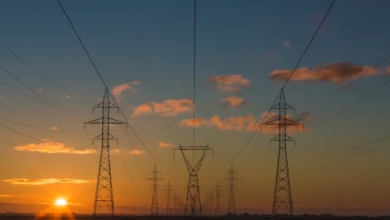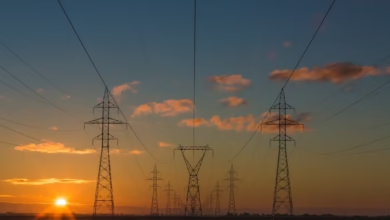How Investors Power the Future: Financing Energy Projects From Solar Power to Nuclear Energy in a Changing Global Energy Market

Investing in Energy: How Investors and Institutions Fuel Projects from Solar Power to Nuclear Reactors
Modern energy projects—from vast solar parks and wind farms to cutting-edge nuclear reactors and carbon capture initiatives—are at the forefront of both economic development and the global response to climate change. The complex world of energy investment involves more than pouring capital into renewable energy or fossil fuels; it demands a nuanced understanding of diverse finance mechanisms, shifting global energy trends, and evolving energy policy. Whether funding hydropower, building energy storage solutions for green energy, or advancing distributed energy networks and smart grids, both investors and institutions face unique challenges and opportunities in a rapidly changing energy landscape.
This article explores the dynamic financing strategies behind renewable energy, fossil fuels, and nuclear energy projects. It highlights the rise of innovative energy storage technologies, the role of energy efficiency in project economics, and how the energy transition is impacting investment decisions across energy markets worldwide. In addition, we examine how government policy, global energy exports and imports, energy security concerns, and trends in hydrogen energy and electric vehicles influence the flow of investment. By understanding these forces, stakeholders can better navigate the evolving landscape of energy R&D, offshore energy ventures, and climate-focused solutions aimed at powering the world more sustainably.
- 1. Navigating Energy Investment: Funding Strategies for Renewable Energy, Fossil Fuels, and Nuclear Projects
- 2. From Green Energy to Energy Storage: Finance Mechanisms Behind Energy Innovations and the Energy Transition
- 3. The Role of Energy Policy, Global Energy Trends, and Energy Markets in Shaping Project Financing
1. Navigating Energy Investment: Funding Strategies for Renewable Energy, Fossil Fuels, and Nuclear Projects
Investors and institutions face a complex array of choices when financing energy projects, influenced by evolving global energy trends, regulatory shifts, and rising demand for clean technologies. Funding strategies often vary depending on the type of energy—renewable energy, fossil fuels, or nuclear energy—and each has unique risk profiles, time horizons, and potential returns.
For renewable energy projects like solar power, wind energy, offshore energy, hydropower, and bioenergy, investment strategies frequently involve public-private partnerships, green bonds, and dedicated infrastructure funds. The expanding focus on energy transition and energy decarbonization, combined with supportive energy policy directives, has accelerated capital flow into renewable energy. Investors are increasingly attracted to projects that integrate energy storage, enhance energy efficiency, and support distributed energy generation—all of which contribute to greater energy security and grid resilience.
In contrast, financing fossil fuel projects—such as oil refineries and natural gas facilities—still relies on conventional loans, export credits, and syndicated bank arrangements. However, mounting climate change concerns and tighter carbon regulations have led to more rigorous due diligence regarding environmental impact, prompting some investors to factor in carbon capture and energy innovations that reduce greenhouse gas emissions. The interplay of global energy markets, volatile energy economics, and shifting energy imports and exports also shapes investment decisions in the fossil fuel sector.
Nuclear energy projects, including the development of new reactors or upgrades of existing plants, require highly specialized investment models, often backed by significant government support due to high upfront costs and long payback periods. Financing mechanisms include state-backed loans, long-term power purchase agreements, and sometimes, project finance consortia with international participation. Ongoing advancements in nuclear R&D, improved thermal energy systems, and robust energy transportation infrastructures are key factors for attracting investment by reducing perceived risks and enhancing the prospects for safe, reliable, and carbon-free baseload power.
Across all sectors, the adoption of smart grids, integration with electric vehicles, and deployment of hydrogen energy solutions are creating new opportunities for energy investment. As the world’s energy system shifts toward a more diversified, resilient, and low-carbon model, innovative financing strategies will be essential for scaling green energy, supporting emerging technologies, and ensuring secure access to energy in a rapidly changing landscape.
2. From Green Energy to Energy Storage: Finance Mechanisms Behind Energy Innovations and the Energy Transition
As the global energy landscape shifts toward sustainability, financing mechanisms for new projects have also evolved. Energy investors and institutions now support a diverse array of technologies, not just traditional fossil fuels or nuclear energy, but innovative sectors such as solar power, wind energy, and energy storage. The growing focus on green energy and energy efficiency has generated new forms of financial structures to accelerate the energy transition.
Renewable energy projects like large-scale hydropower, offshore energy installations, and distributed energy resources attract funding through green bonds, public-private partnerships, and government-backed incentives. These approaches not only help reduce reliance on fossil fuels but also support emerging solutions like bioenergy, hydrogen energy, and advanced thermal energy systems. The growing deployment of smart grids and distributed generation further decentralizes investment, allowing both institutional investors and smaller stakeholders to participate in reshaping energy markets.
A key innovation is the financing of energy storage solutions. As intermittent renewable energy sources, such as solar and wind, gain market share, storage technologies play a critical role in balancing supply and demand. Venture capital, energy R&D grants, and dedicated infrastructure funds are increasingly being directed towards battery manufacturing, grid-scale storage, and related sectors. This support enhances grid flexibility, enabling more renewable energy to enter the mix and bolstering energy security.
Energy policy also shapes financing flows. Many governments tie investment incentives to climate change targets, such as through subsidies for electric vehicles or tax credits for carbon capture and energy-efficient building upgrades. These measures shape global energy trends by guiding capital toward projects that contribute to emissions reductions.
The movement of capital across borders—including energy exports and energy imports—is also influenced by energy economics and shifting demand for electricity and low-carbon fuels. As a result, international development banks and export credit agencies are now more selective, supporting infrastructure that aligns with sustainable energy goals and advances the wider energy transition.
In summary, financing mechanisms for energy innovations have grown more sophisticated, encompassing tools tailored to green energy, energy efficiency, and disruptive technologies like energy storage and hydrogen. This evolution reflects not only technological progress but also a broader change in investor priorities, policy direction, and the imperative to address climate change through resilient, low-carbon energy systems.
3. The Role of Energy Policy, Global Energy Trends, and Energy Markets in Shaping Project Financing
Energy policy, global energy trends, and energy markets play decisive roles in shaping how investors and institutions fund large-scale energy projects. Governments around the world use energy policy to incentivize or restrict investment in sectors such as renewable energy, fossil fuels, nuclear energy, and emerging technologies like hydrogen energy. For instance, feed-in tariffs, tax credits, and renewable portfolio standards can direct capital towards solar power, wind energy, hydropower, and bioenergy, accelerating the adoption of green energy and supporting the broader energy transition.
Global energy trends often dictate where investor interest flows. The heightened focus on climate change and energy security has led to rising demand for energy efficiency solutions, energy storage, and smart grids. These innovations not only make distributed energy systems more viable but also improve the integration of intermittent sources like wind and solar into national energy markets. As countries seek to decarbonize, financial institutions are shifting away from fossil fuels towards investments in carbon capture, nuclear energy, and low-carbon energy R&D, supporting the growth of sustainable energy systems.
Energy markets themselves influence project financing through mechanisms such as fluctuating wholesale prices, capacity auctions, and bilateral contracts. The value of energy exports and imports, along with regional supply-demand dynamics, impacts both risk assessments and projected returns for new energy investments. For example, volatility in oil and gas prices can affect financing terms for offshore energy or thermal energy projects, while long-term power purchase agreements help secure funding for renewable facilities.
Additionally, evolving global energy economics—including the rise of electric vehicles, hydrogen supply chains, and energy transportation infrastructure—creates new opportunities and challenges for project financiers. Dependable regulatory frameworks, transparent market rules, and strong commitments to energy innovation are key for attracting continued investment into the sector and sustaining progress towards a resilient, low-carbon energy future.
Conclusion
Financing energy projects—whether in solar power, wind energy, hydropower, fossil fuel plants, or ambitious nuclear energy endeavors—requires a nuanced understanding of evolving financial strategies and global energy trends. As the world shifts toward renewable energy and seeks to improve energy efficiency, investors and institutions must continuously adapt to new energy markets, policy frameworks, and technological breakthroughs like energy storage, smart grids, and carbon capture. The expansion of energy innovations, from hydrogen energy to bioenergy and offshore energy solutions, underscores the pivotal role of comprehensive energy investment in driving the energy transition.
Robust energy policy and forward-thinking energy economics are critical to enabling efficient distributed energy systems, meeting climate change goals, and strengthening energy security. Whether financing thermal energy plants, supporting energy R&D, or bridging energy exports and imports, stakeholders are navigating a rapidly transforming landscape. The future of energy financing will increasingly be shaped by the ability to blend sustainability with profitability, leveraging energy transportation breakthroughs and electric vehicles to unlock new value streams.
Ultimately, successful energy project finance depends on anticipating shifts in global energy trends and aligning investment strategies with both market demand and regulatory evolution. As the energy sector embraces greater innovation and complexity, informed decision-making remains the cornerstone of scalable, sustainable, and future-proof energy investment.





